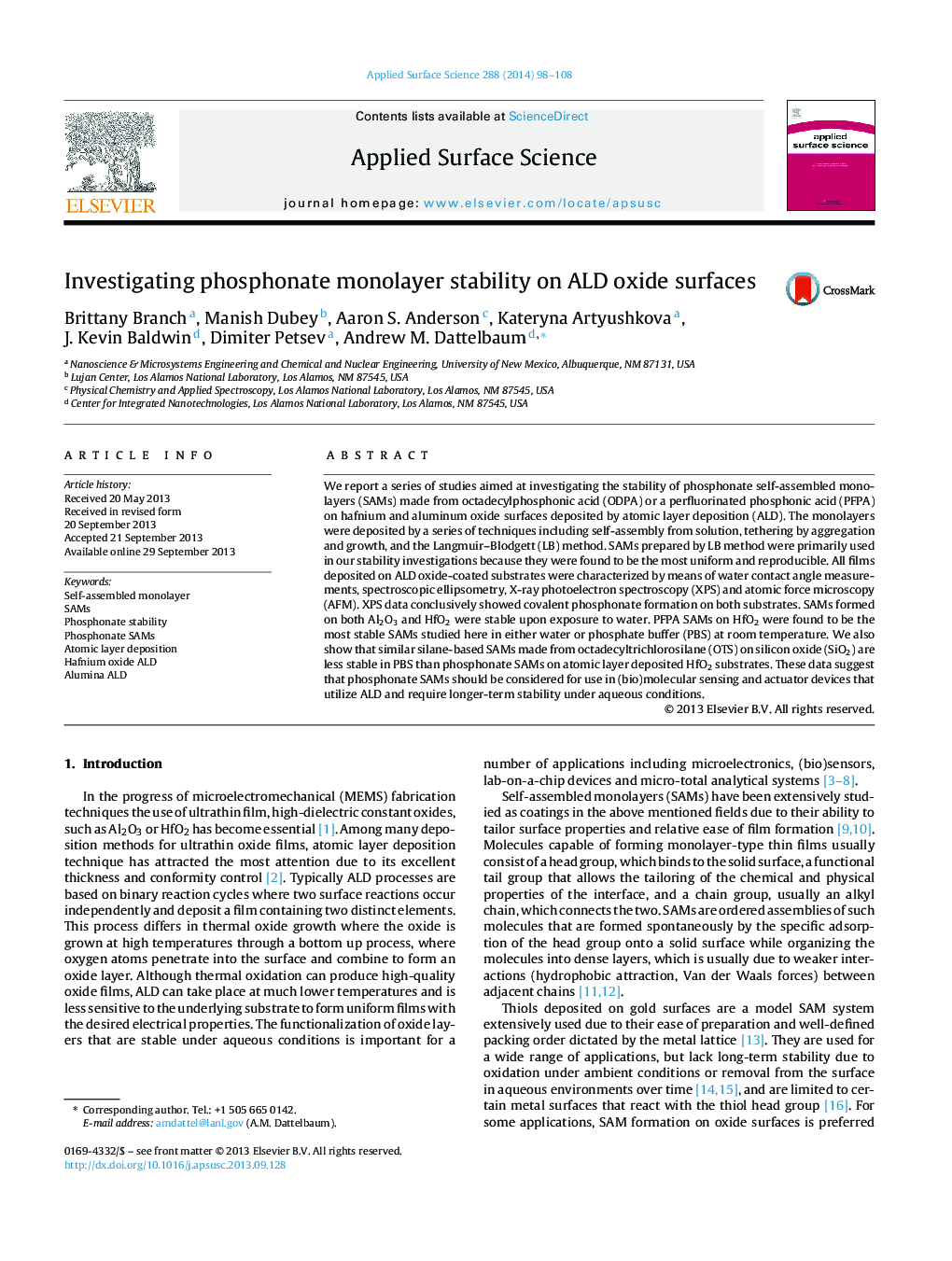| Article ID | Journal | Published Year | Pages | File Type |
|---|---|---|---|---|
| 5351819 | Applied Surface Science | 2014 | 11 Pages |
Abstract
We report a series of studies aimed at investigating the stability of phosphonate self-assembled monolayers (SAMs) made from octadecylphosphonic acid (ODPA) or a perfluorinated phosphonic acid (PFPA) on hafnium and aluminum oxide surfaces deposited by atomic layer deposition (ALD). The monolayers were deposited by a series of techniques including self-assembly from solution, tethering by aggregation and growth, and the Langmuir-Blodgett (LB) method. SAMs prepared by LB method were primarily used in our stability investigations because they were found to be the most uniform and reproducible. All films deposited on ALD oxide-coated substrates were characterized by means of water contact angle measurements, spectroscopic ellipsometry, X-ray photoelectron spectroscopy (XPS) and atomic force microscopy (AFM). XPS data conclusively showed covalent phosphonate formation on both substrates. SAMs formed on both Al2O3 and HfO2 were stable upon exposure to water. PFPA SAMs on HfO2 were found to be the most stable SAMs studied here in either water or phosphate buffer (PBS) at room temperature. We also show that similar silane-based SAMs made from octadecyltrichlorosilane (OTS) on silicon oxide (SiO2) are less stable in PBS than phosphonate SAMs on atomic layer deposited HfO2 substrates. These data suggest that phosphonate SAMs should be considered for use in (bio)molecular sensing and actuator devices that utilize ALD and require longer-term stability under aqueous conditions.
Related Topics
Physical Sciences and Engineering
Chemistry
Physical and Theoretical Chemistry
Authors
Brittany Branch, Manish Dubey, Aaron S. Anderson, Kateryna Artyushkova, J. Kevin Baldwin, Dimiter Petsev, Andrew M. Dattelbaum,
